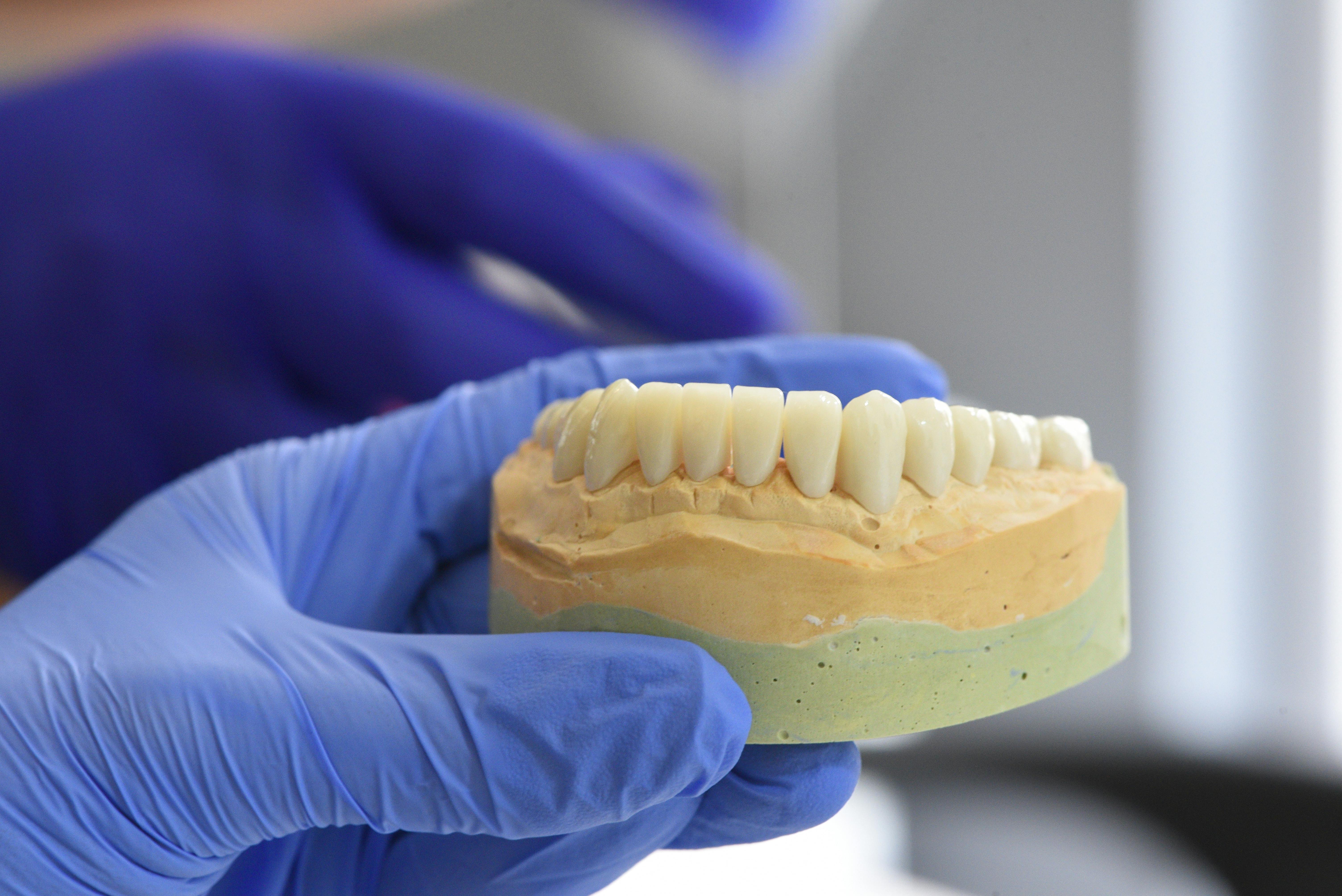Having white teeth can make a big difference in your overall appearance. Unfortunately, certain foods and drinks can cause discoloration and staining of the teeth. Knowing which culprits to watch out for can help you keep your teeth looking their best. This article will discuss what stains your teeth the most.Stains on teeth are usually caused by consuming certain foods and drinks that contain color pigments, such as coffee, tea, red wine, dark sodas, and fruit juices. Additionally, smoking and poor dental hygiene can also contribute to tooth discoloration.
Food and Drinks That Stain Teeth
Certain foods and drinks can cause discoloration and staining of the teeth. The most common culprits are dark-colored beverages like coffee, tea, cola, energy drinks, wine, and some fruit juices. These beverages contain chromogens that can attach to the enamel on teeth and cause staining. Additionally, dark-colored sauces like soy sauce and tomato sauce may contain chromogens that can also lead to yellowing of the teeth.
Eating certain fruits and vegetables such as blueberries, blackberries, beets, and pomegranates can also lead to staining of the teeth due to their natural pigments. Consuming foods with high acidity levels like pickles, citrus fruits, or vinegar-based dressings can also damage the enamel on your teeth leading to discoloration. Sugary snacks like candy or lollipops should be avoided as they can promote bacterial growth in your mouth which can result in dental decay that affects tooth color.
It’s important to remember that even if you follow a healthy diet and limit your consumption of potentially staining foods and drinks, brushing your teeth daily is essential for maintaining good oral hygiene. You should also opt for regular professional cleanings from a dentist twice a year to help keep your smile bright!
Limiting Consumption of Staining Foods and Drinks
One of the best ways to prevent tooth stains is to limit your consumption of staining foods and drinks. Coffee, tea, red wine, dark sodas, sports drinks, and certain fruits like berries can all cause staining. If you do choose to consume these items, be sure to brush your teeth afterwards or rinse out your mouth with water. Sugary foods can also contribute to tooth stains as well as cavities, so it’s best to limit how much of these you eat.
Quitting Smoking
Smoking is one of the most common causes of tooth discoloration and staining. If you are a smoker, quitting is the best way to prevent further damage to your teeth. Many people find that their teeth become lighter as soon as they stop smoking.
Practicing Good Oral Hygiene
In addition to limiting staining foods and drinks and quitting smoking, practicing good oral hygiene is essential for preventing tooth stains. This means brushing twice a day with a soft-bristle toothbrush and fluoride toothpaste, flossing every day, and rinsing with an antiseptic or fluoride mouthwash. Regular dental cleanings by a dentist are also important for removing plaque buildup that can lead to discoloration.
Using Whitening Toothpaste
Using whitening toothpaste can help reduce surface stains on your teeth. Unlike other types of toothpaste which simply clean the surface of the teeth, whitening toothpaste contains ingredients such as hydrogen peroxide or baking soda that help remove stain-causing particles from the enamel. Additionally, whitening strips or gels may be used in conjunction with regular brushing for more effective stain removal.
By following these simple tips, you can keep your teeth looking white and healthy for years to come!
Types of Tooth Stains
Tooth stains are classified into two types: extrinsic and intrinsic. Extrinsic stains are those that appear on the surface of the tooth, usually as a result of poor dental hygiene or lifestyle habits such as drinking coffee, tea, or red wine. Intrinsic stains are those that occur underneath the enamel layer of the tooth and can be caused by certain medications, excessive fluoride, or trauma to the tooth.
Extrinsic staining is usually seen in adults and can range from yellow to brown in color. It is caused when microscopic particles of plaque accumulate on the teeth over time, resulting in a yellowish discoloration. This type of stain can often be removed with regular brushing and flossing.
Intrinsic staining is more difficult to remove and usually requires professional treatment such as bleaching or veneers. It can range from yellow to gray in color and is caused by a variety of factors such as medications, excessive fluoride exposure, or trauma to the tooth. Intrinsic staining can also be caused by certain medical conditions such as tetracycline use during pregnancy or childhood.
In addition to these two common types of tooth stains, there are other less common types that may require professional treatment for removal. These include tetracycline-induced staining which occurs when antibiotics such as tetracycline are taken during pregnancy or childhood; fluorosis staining which can occur if too much fluoride is ingested; and composite resin staining which occurs when fillings become stained due to food particles or drinks being trapped beneath them.
No matter what type of tooth stain you have, it’s important to visit your dentist regularly for check-ups and cleanings so they can monitor your oral health and help you keep your teeth looking healthy and bright!
The Effects of Tannins on Teeth Stains
Tannins are a type of plant-based compounds that can be found in many foods and beverages. They are known for their astringent taste and strong antioxidant properties. While tannins have been linked to a variety of health benefits, they can also have an effect on teeth stains.
Tannins are thought to bind with proteins in the saliva, which helps to form a protective film on the enamel of the teeth. This film can help prevent staining from occurring, as it keeps the enamel from being exposed to substances that may discolor it. Additionally, tannins may also help dissolve existing stains, allowing them to be removed more easily.
However, it is important to note that tannins may not always be beneficial when it comes to teeth stains. If consumed in excess, they may actually worsen staining due to their acidic nature. This is because acids can weaken enamel and make it more susceptible to discoloration from other substances. Therefore, if you are looking to reduce the effects of staining on your teeth, you should limit your consumption of foods and drinks that contain high amounts of tannins.
It is also important to practice good oral hygiene when consuming items with high levels of tannins. Brushing and flossing regularly can help remove any residue left behind by these compounds before they have a chance to cause damage or discoloration. Additionally, drinking plenty of water after consuming items containing tannins can help rinse away any remaining particles before they become a problem for your teeth.
In conclusion, while tannins may offer some protection against teeth staining, too much consumption can lead to further discoloration and damage over time. Therefore, it is important to practice moderation when consuming items high in these compounds and ensure proper oral hygiene habits are maintained in order to keep your smile looking its best!

The Role of Bacteria in Teeth Staining
Bacteria play an important role in teeth staining, as certain types of bacteria can adhere to the surface of teeth and produce pigments that cause discoloration. The most common type of bacteria that stains teeth is known as Streptococcus mutans, which produces a sticky substance called dental plaque. When plaque builds up on teeth, it can cause yellowing and discoloration. Another type of bacteria, Porphyromonas gingivalis, is also known to be responsible for staining teeth and can contribute to the development of cavities.
In addition to these two types of bacteria, other microorganisms such as fungi and yeasts can also cause tooth staining. Fungi such as Candida albicans are capable of producing pigments that lead to yellow or brown discoloration on the surface of teeth. Similarly, certain yeasts can produce dark pigment deposits that are difficult to remove.
Generally, individuals with poor oral hygiene are more likely to experience tooth staining due to the accumulation of plaque and other microorganisms on their teeth. Poor oral hygiene leads to an increase in bacterial growth inside the mouth, which in turn increases the risk of tooth staining. To prevent this, it is important for individuals to practice good oral hygiene by brushing their teeth twice a day with fluoride toothpaste and flossing regularly. Additionally, individuals should visit their dentist regularly for check-ups and professional cleanings so that any buildup of bacteria or tartar can be removed.
By taking these preventive measures, individuals can reduce their risk for developing stained teeth caused by bacteria and other microorganisms.
How to Remove Stubborn Tooth Stains
It can be frustrating to see stubborn stains on your teeth. You may have tried different whitening products, but the stains remain. Fortunately, there are several steps you can take to remove stubborn tooth stains and restore the natural whiteness of your teeth. Here are some tips on how to remove stubborn tooth stains.
The first step is to brush your teeth regularly with a whitening toothpaste. Whitening toothpaste is formulated with abrasives that help remove surface stains from your teeth. It also contains bleaching agents that help lighten deeper set stains. Be sure to use a soft-bristled toothbrush and be gentle when brushing so as not to damage your enamel.
Another way to get rid of stubborn tooth stains is by using a whitening rinse or mouthwash. These rinses contain hydrogen peroxide, which helps break down the molecules in teeth stains and make them easier to remove when you brush your teeth. Be sure to swish the rinse around in your mouth for 30 seconds before spitting it out.
In addition, using baking soda mixed with water can also help remove stubborn tooth stains. Baking soda is mildly abrasive and helps scrub away surface level stains from the enamel of the teeth without damaging it too much. Mix one teaspoon of baking soda with enough water to form a paste, then brush your teeth with it for two minutes before rinsing off thoroughly with water.
Finally, professional dental treatments such as bleaching or laser whitening can be used for stubborn tooth stains that don’t respond well to home remedies. If you’ve tried everything else but still find yourself struggling with persistent tooth discoloration, consult a dentist who can offer professional whitening treatments tailored specifically for your needs.
With these tips on how to remove stubborn tooth stains, you should be able to restore the natural white color of your teeth in no time!

Conclusion
It is clear that consuming certain foods and drinks can lead to staining of the teeth. The most common substances that stain your teeth are coffee, tea, red wine, tobacco products, and certain acidic foods. It is also important to remember that poor oral hygiene habits can contribute to staining your teeth as well.
It is best to take preventive measures against staining such as brushing and flossing regularly as well as avoiding or drinking in moderation the substances mentioned above. Taking regular trips to your dentist for cleanings and check-ups will also help keep your teeth healthy and bright.
In conclusion, it is important to take good care of your teeth in order to avoid discoloration caused by staining. Eating a balanced diet, avoiding certain foods and drinks such as coffee, tea, red wine, tobacco products, and acidic foods can help maintain healthy teeth without discoloration or staining. Regular visits to the dentist will also help keep your smile looking its best!
